Shaped by ancient streams that once fed the South London landscape, Croydon’s story spans Saxon minsters, medieval markets and Victorian innovation. With HOLD set to open its Croydon storage facility soon, we thought we'd celebrate the area's storied history.
Key takeaways
Croydon was first recorded in 809 CE as the site of a Saxon minster church. It later grew into a major medieval market town.
Surrey Street Market has traded since 1276, making it one of the UK’s oldest continually operating markets.
Croydon Palace and Addington Palace served as archbishops’ residences for over 500 years, notably under John Whitgift.
Croydon Aerodrome pioneered international passenger flights and established the world’s first air traffic control tower.
Modern Croydon blends cultural venues, a tram network and major office space, anchored by Fairfield Halls and St George’s House.
In this guide, you’ll discover how medieval traders on George Street and Crown Hill gave way to air pioneers at Croydon aerodrome, tramlines linking East Croydon station to Thornton Heath, and today’s dynamic mix of arts venues, office hubs and community spirit.
Early origins and medieval times
Evidence of prehistoric tools and Roman coins near London Road hints at an early passage along what would become Middle Row. Saxon settlers built timber dwellings near the River Wandle, which flows into the Thames
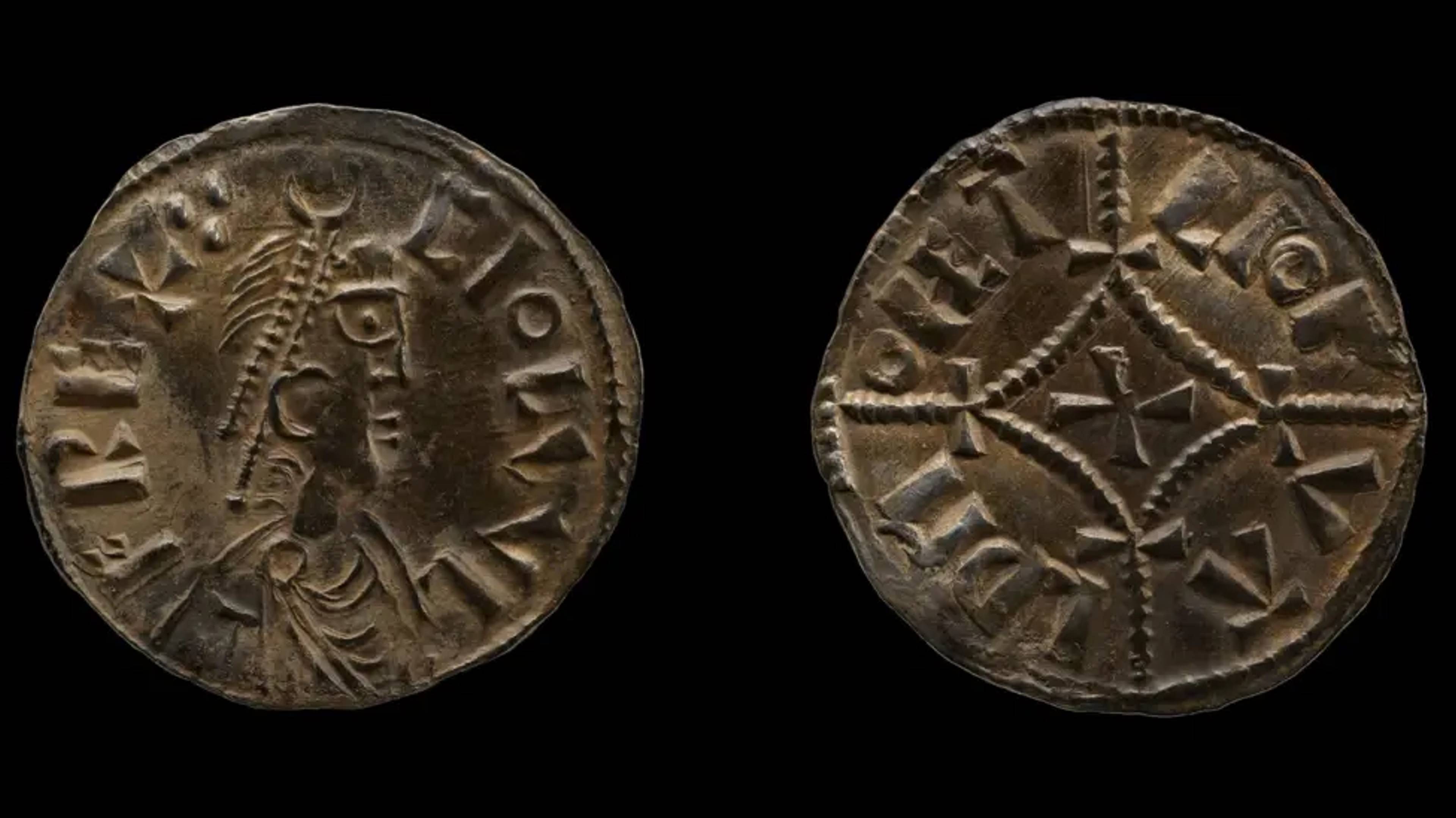
A church was recorded in wills around 960 CE, forming the roots of what locals now call Croydon Minster. The name Croindone (possibly meaning "valley of the crocuses") appeared in charters as early as 809 C.E. The Domesday Book of 1086 lists Archbishop Lanfranc as lord, with thirty-eight plough teams, woodland for two hundred hogs and a population of roughly three hundred and sixty-five.
The name John de Croydon first appears in a 14th-century will. Local tradition later associated him with vaulted cellars beneath Old Town. Crown Hill and George Street evolved as the spine of the early township.
Tudor street directories describe inns and alehouse yards on George Street, where merchants weighed leather hides and barrels of ale. Market stalls spilt onto the North End and served as grazing pasture.
In 1276, Archbishop Kilwardby secured the first weekly market charter, birthing Surrey Street Market, still held six days a week by tradition.
Croydon’s Saxon minster was replaced by a stone nave in the twelfth century. Traces of its carved font and pillars survive in pictorial history collections at the Museum of Croydon.
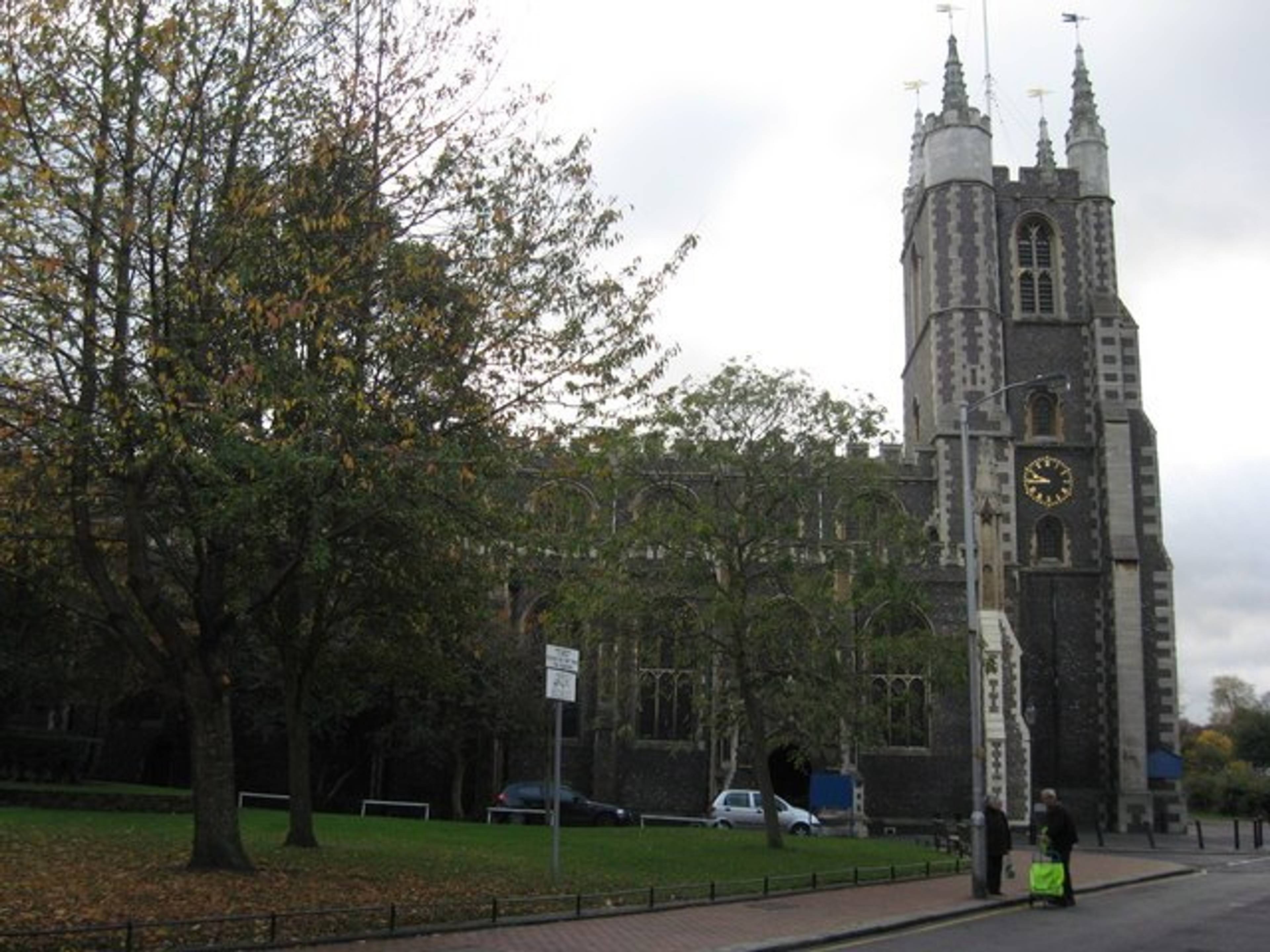
Nearby, a girls' school founded under Archbishop John Whitgift’s endowments hinted at the town’s rising status as an educational centre. The motto ad summa nitamur, which means "let us strive for the highest", became linked to Whitgift Foundation schools, echoing Croydon’s ambition.
Croydon council records from the later Middle Ages note maintenance of the London Road route to central London, underscoring the town’s link to the capital even as it remained part of the former county borough before modern reorganisation.
Closer to the riverbanks, wheelwrights on Middle Row crafted sturdy carts for hauling turf from New Addington, while coopers beside the Wandle shaped oak staves into barrels destined for Surrey Street Market.
Seasonal rhythms shaped the calendar. Candlemas and other seasonal traditions reflected hopes for renewal and good harvests
By summer’s height, festivals on Crown Hill saw music from fiddlers and minstrels echo across the meadows.When winter frost lay a crust on Broad Green, townsfolk gathered by the forge, a centre of village life during long winter nights.
Croydon as a religious and market centre
For over five hundred years, Croydon Palace served as the summer palace for six Archbishops of Canterbury. Monarchs like Henry III and Elizabeth I dined in its great halls.
In 1781, the archbishops relocated to Addington Palace, but the original palace lives on as Old Palace Girls School. Baptisms and rent rolls recorded in church registers reveal thriving communities in Upper Norwood and South Norwood, whose woodlands supplied fuel for the town’s emerging power station mills.
Market life extended from Crown Hill along Church Street and Middle Row. Street directories from the seventeenth century detail trades ranging from silversmiths on George Street to coopers on North End.
Broad Green’s triangular village green hosted occasional fairs under oak trees. Thornton Heath and New Addington lay beyond parish bounds but sent carts of turf for sale in Surrey Street Market.
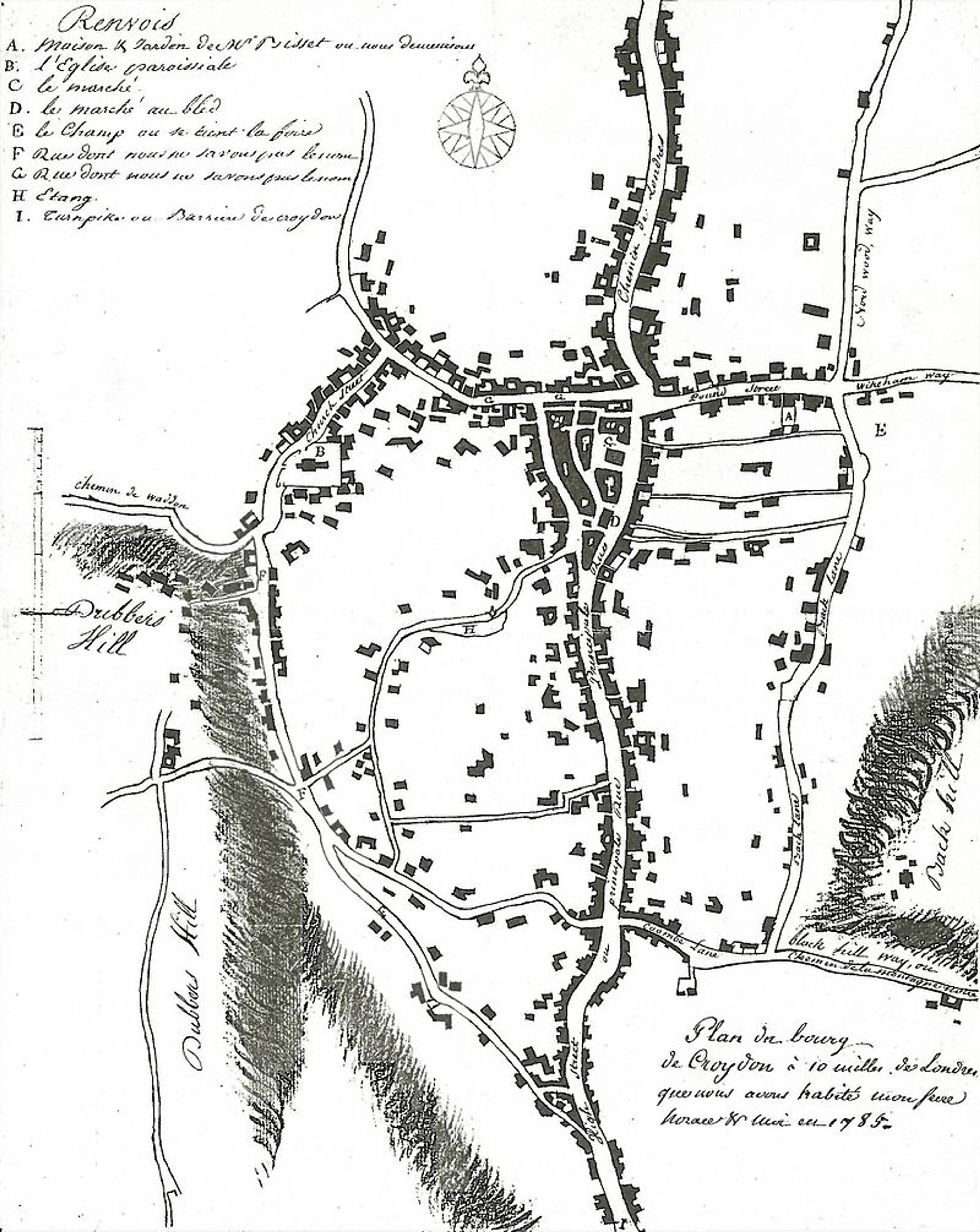
Religious festivals are punctuated each year. Archbishop John Whitgift’s almshouses stood on Trinity Road, while pottery shards unearthed near the River Thames embankment testify to jugs carried down from local kilns.
Croydon’s role as a civic and market centre grew so prominent that in 1883, Croydon was made a county borough, independent of Surrey.
Croydon council then embarked on building new schools, libraries and civic offices along Katherine Street and London Road, cementing the town’s administrative importance within the London Borough.
Market activity continued to spread beyond Croydon’s core, drawing farmers from Thornton Heath and New Addington to deliver hay and turf along what would become London Road.
Wheelwrights on Middle Row fashioned sturdy carts to carry local produce down to the Surrey Street Market, while coopers beside the Wandle turned oak sourced from South Norwood into barrels for ale and cider.
Inns on Church Street and Park Lane welcomed travellers and merchants alike, their warm hearths offering a chance to exchange news of markets in central London or forthcoming fairs at West Croydon and Broad Green.
Industrial growth and Victorian era
The nineteenth century transformed Croydon’s identity once more. Charcoal pits near New Addington and leather tanneries beside the River Wandle steered trade, while breweries in Broad Green supplied ale across Britain.
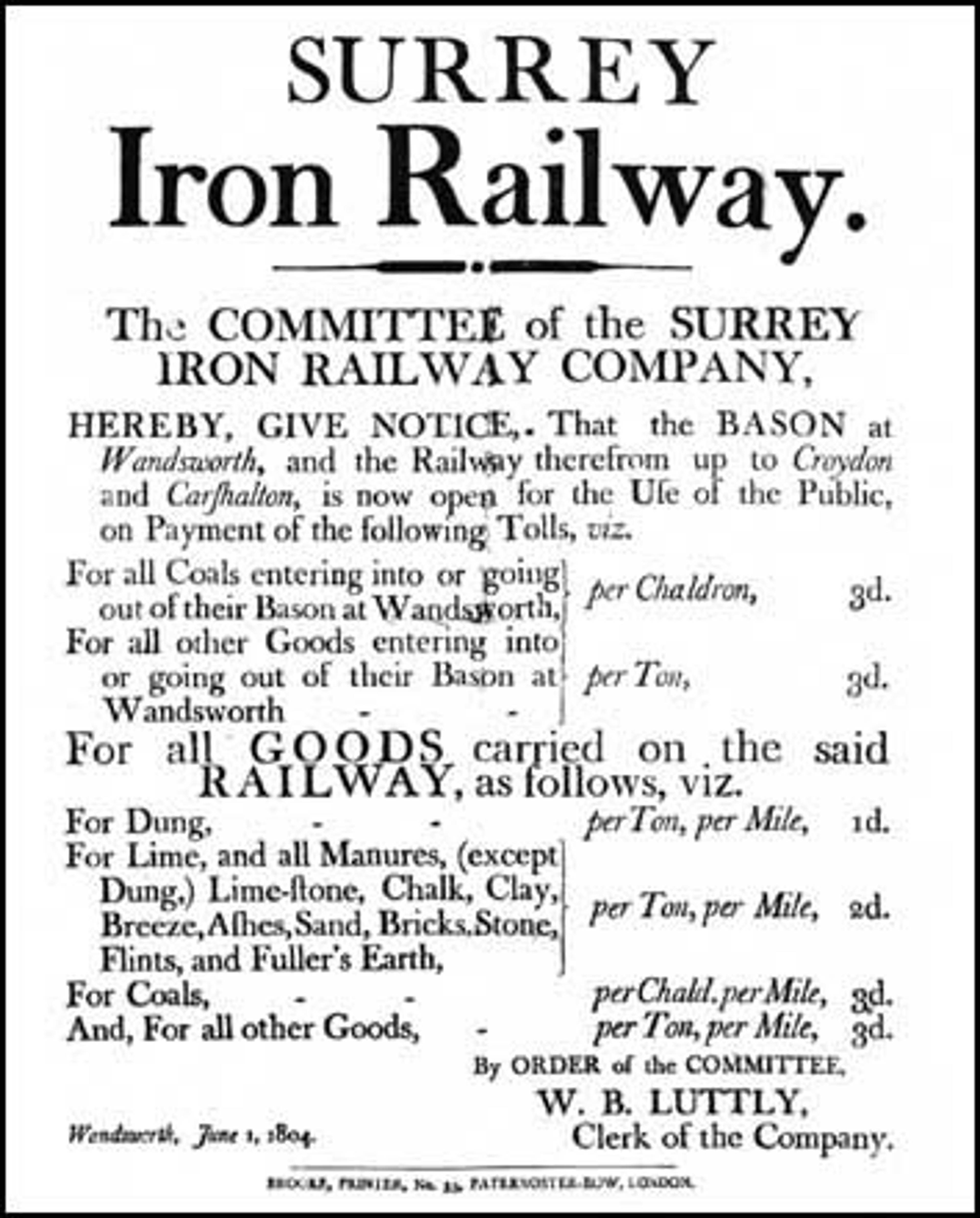
The horse-drawn Surrey Iron Railway opened in 1803, followed by the Croydon Canal. Steam arrived at East Croydon station in 1841, later joined by West Croydon in 1846, making Croydon a key commuter hub in Greater London.
The Victorian tram system debuted on Church Street in the 1880s, linking South Norwood and Thornton Heath to the town centre.
Spa culture flourished when Decimus Burton designed the Royal Beulah Spa on Spa Hill. The summer palace-style grounds hosted concerts at the concert hall and balloon ascents for Theatre Royal patrons.
Notable Victorians, including Charles Dickens and Pablo Fanque were associated with the area. Local tradition also links Queen Victoria to Beulah Spa.
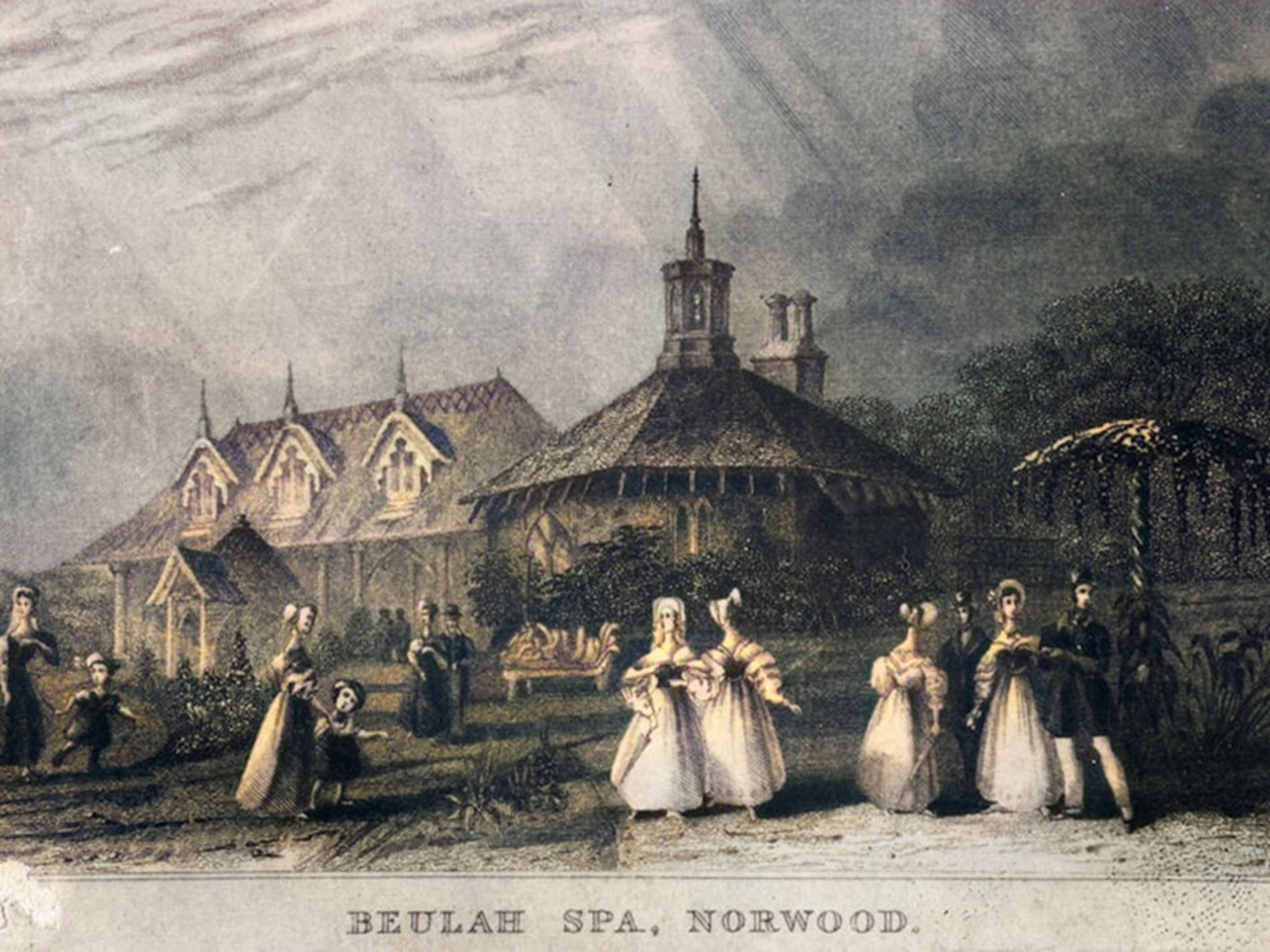
When the Crystal Palace moved nearby in 1854, the spa waned, but Tivoli Lodge endures as a rare survivor of that era.
Public health measured up to industrial expansion. In 1849, the Croydon Local Board of Health built reservoirs at Duppas Hill. Sewage works at Broad Green reduced outbreaks of typhoid.
In 1867, Croydon General Hospital opened on London Road and grew amid concern from cholera epidemics. Street directory listings of midwives and surgeons on Katherine Street speak to a community confronting rapid growth with innovation.
Over the later Victorian decades, Croydon’s skyline began to hum with new energy. Near the Wandle’s banks, gasworks and the first local power station rose beside old tanning yards, supplying street lamps along Church Street and Katherine Street by 1882.
As lamplighters made their early rounds, the air at dusk carried the scent of coal smoke mingled with hops from Broad Green breweries. At the same time, the Croydon railway lines expanded: goods sidings sprouted at West Croydon and freight yards at South Croydon, linking local manufacturers to ports on the south coast and factories across Greater London.
Meanwhile, leisure pursuits grew alongside industry. The Royal Beulah Spa’s concert hall on Park Lane attracted visitors from as far afield as New Addington and Upper Norwood, who arrived by horse‑drawn omnibus or the nascent tram network.
20th-century war aviation and urban development
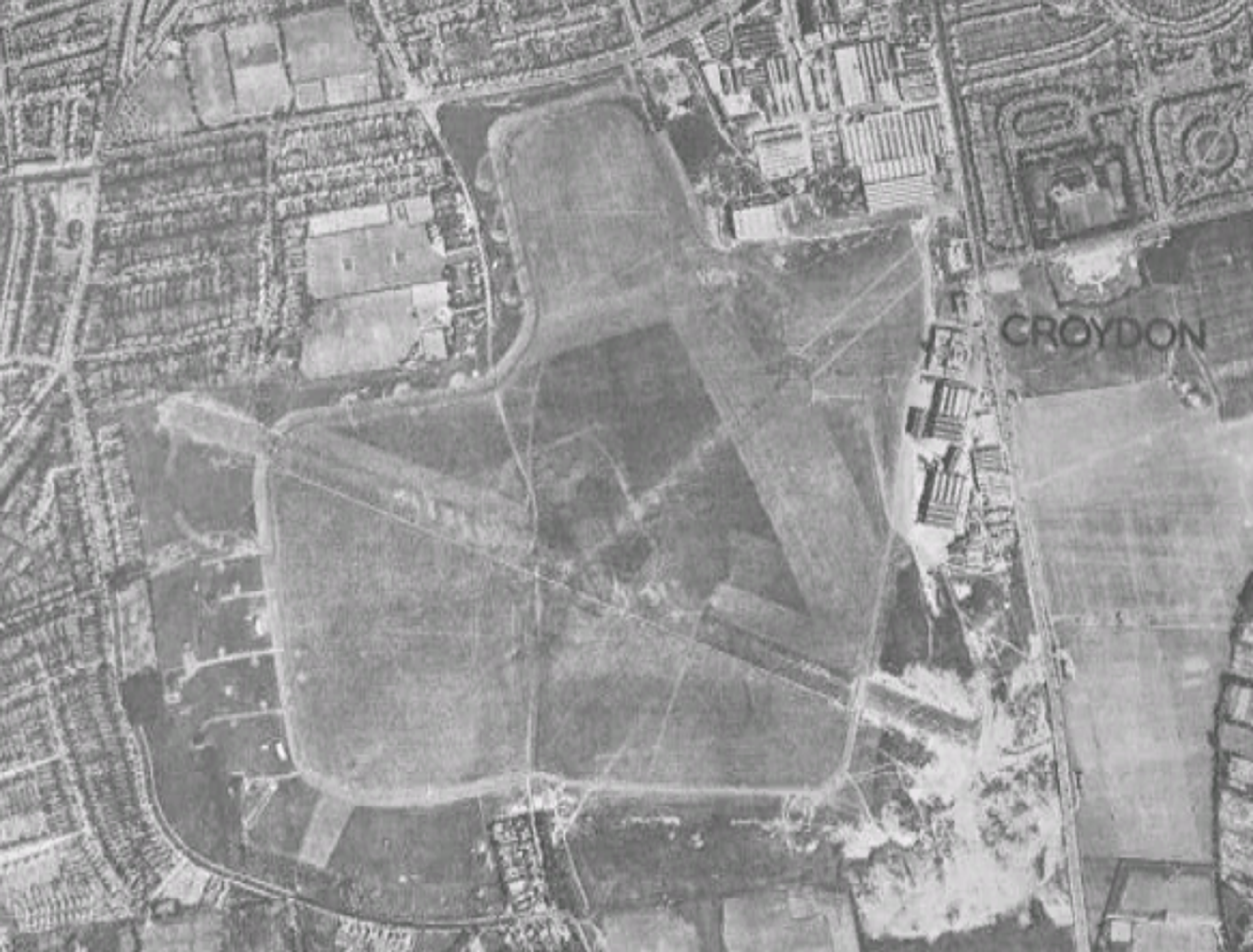
Over the years, the former RAF Croydon airfield at Croydon Aerodrome (now known as Croydon Airport) took on fresh civilian life. Post‑war, hangars were repurposed into light industrial workshops and small factories, and the grass runways gave way to open‑plan office space for emerging engineering firms.
Local councillors on Croydon Council championed redevelopment of the site, commissioning art‑decor panels that paid homage to the “Mayday” calls first issued here.
By the mid‑1960s, that spirit of innovation attracted entrepreneurs eager to build upon Croydon’s aviation legacy, and new warehouses and light manufacturing units sprang up along London Road and in the Addiscombe Ward.
Meanwhile, transport links continued to flourish. East Croydon Station was modernised to handle electric trains, and its platforms were extended to welcome commuters bound for Victoria and London Bridge.
The tram network was expanded beyond a single station interchange, connecting West Croydon to Beckenham Junction through South Norwood and Broad Green.
As the tram cars rattled past High Street shops and the facades of Old Buildings, passengers glimpsed the restored façade of St George’s House and the gleaming glass of the recently completed NLA Tower.
Urban planners saw opportunity in former railway goods yards, converting redundant sidings into mixed‑use developments that blended retail, leisure and green spaces.
A new entertainment centre rose beside the old power station chimneys on Park Lane, offering concert hall performances alongside community theatre at the Theatre Royal.
Developers worked with heritage teams to retain carved doorways from the summer palace era, integrating them into contemporary apartments whose glazed balconies command views across Croydon Borough.
By the late twentieth century, Croydon had become more than a suburb. It was a true urban district within Greater London.
Modern Croydon culture, transport and economy
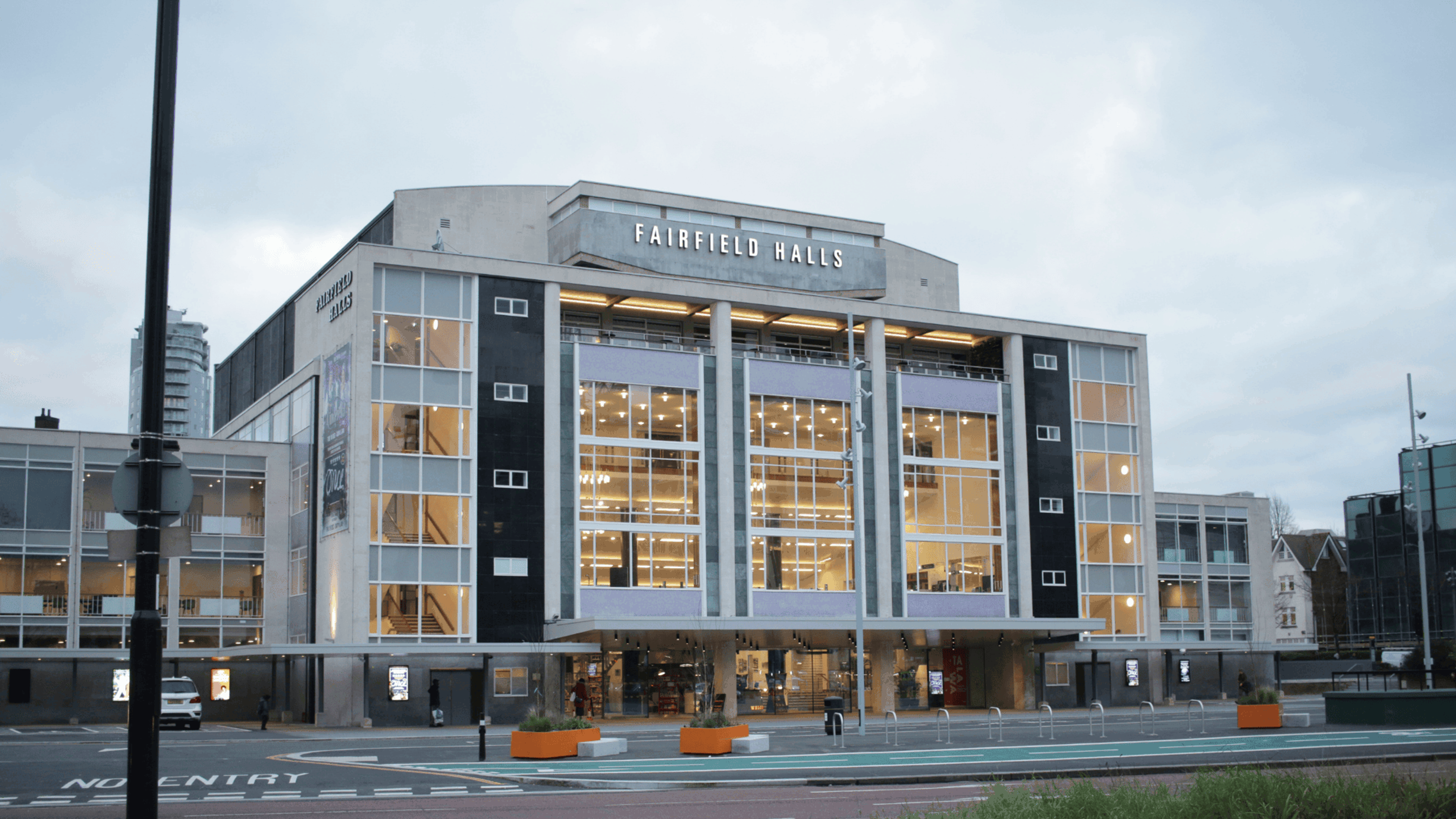
Today, Croydon borough buzzes as one of Greater London’s most dynamic hubs. High Street and Whitgift Centre bustle with shoppers browsing a mix of long‑established retailers and indie boutiques.
Croydon’s theatre scene lives on through venues like Fairfield Halls and the Ashcroft Playhouse, once part of the legacy that included the historic Theatre Royal
St George’s House and a dozen smaller arts venues host exhibitions, workshops and film screenings, ensuring there is always something new to discover.
Transport links remain Croydon’s greatest asset. East Croydon station sees over twenty million passengers a year, with fast trains whisking commuters to London Bridge, Victoria or Gatwick Airport in under thirty minutes.
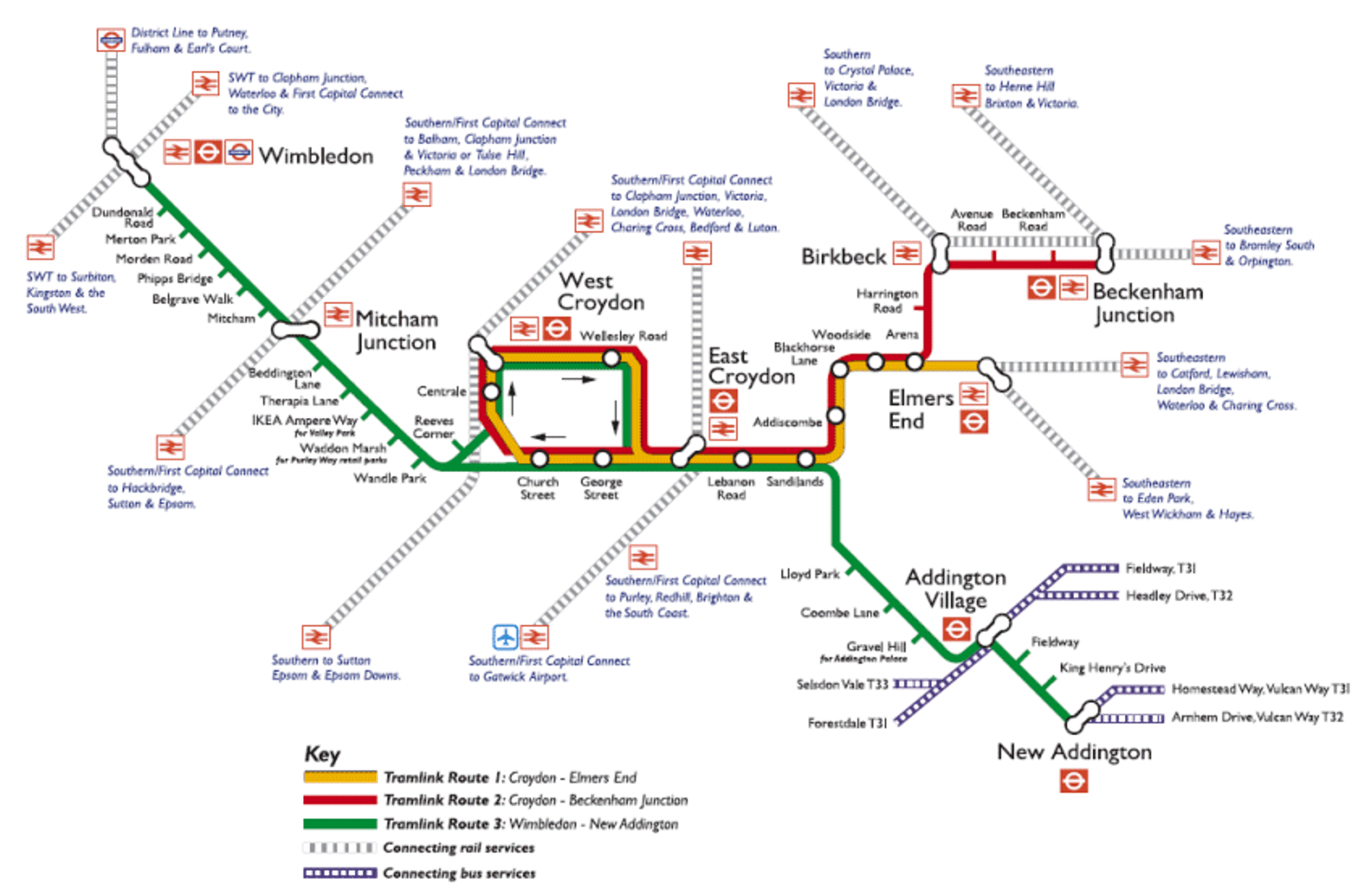
The tram network weaves past West Croydon, South Norwood and Thornton Heath, terminating at New Addington. Bus routes fan out from Church Street and Crown Hill into every corner of the borough, while cycle routes trace former railway lines for a traffic‑free ride.
Office developments have transformed former industrial sites into bright, flexible workspaces. No. 1 Croydon, the familiar NLA Tower, shares its skyline with newer glass‑fronted buildings offering co‑working floors, cafés and roof terraces.
Croydon Aerodrome’s legacy still shapes the town’s identity. Though commercial flights ceased in 1959, the former airport buildings have found fresh purpose.
The terminal now hosts community events and aviation exhibits, while the control tower stands as a local landmark. Surrounding hangars have been adapted into rehearsal studios, light industrial units and performance spaces that pay tribute to Croydon’s pioneering spirit.
Alongside independent arts venues and co‑working hubs at St George’s House, Croydon College serves over 13,000 students in vocational and academic courses, feeding the borough’s thriving digital and creative sectors.
Meanwhile, green spaces such as Lloyd Park in South Croydon and Queen’s Gardens near the Town Hall offer peaceful retreats.
Heritage trails guide visitors past old buildings, from the medieval stones of Old Town to Victorian façades on Katherine Street, while pictorial history panels bring stories to life.
And as evening falls, the motto ad summa nitamur resonates anew in Croydon’s streets: a reminder that this borough, always in motion, continues striving for the highest.
Final thoughts
From Saxon roots to a pioneering aviation hub and now a vibrant part of Greater London, Croydon’s journey is one of constant reinvention. Its rich heritage, strong transport links, and growing cultural and business scenes make it a borough that honours its past while shaping its future.
Making history or moving house? HOLD’s got you covered

As Croydon continues to grow and evolve, HOLD Self Storage is here to support every transition, whether you're settling in, just visiting, or running a business in the area.
If you're in between homes or exploring the borough, our short term storage offers a flexible, secure solution. Local businesses can also benefit from our trusted archive storage, ideal for storing documents without cluttering your workspace.
While the HOLD Croydon location is on its way, you can already make use of our North London facility for dependable, secure storage with 24/7 access.
Get your free quote today
Frequently asked questions
When was Croydon first mentioned in records?
Croydon is first recorded in 809 CE as a Saxon minster site, and appears in the Domesday Book in 1086 under the Archbishop of Canterbury.
What role did Croydon aerodrome play in aviation history?
Croydon Aerodrome pioneered early international air travel and remained active until commercial flights ceased in 1959.
How can HOLD Self Storage assist when moving in Croydon?
HOLD offers tailored personal storage solutions and a moving checklist ideal for residents relocating within Croydon borough.
Does HOLD provide flexible access for stored items?
Yes, HOLD’s facilities include 24-hour storage units, giving Croydon customers complimentary round-the-clock access.
What defines modern Croydon’s cultural scene?
Modern Croydon features a vibrant arts scene, anchored by Fairfield Halls and supported by spaces like Arnhem Gallery and St George’s House

